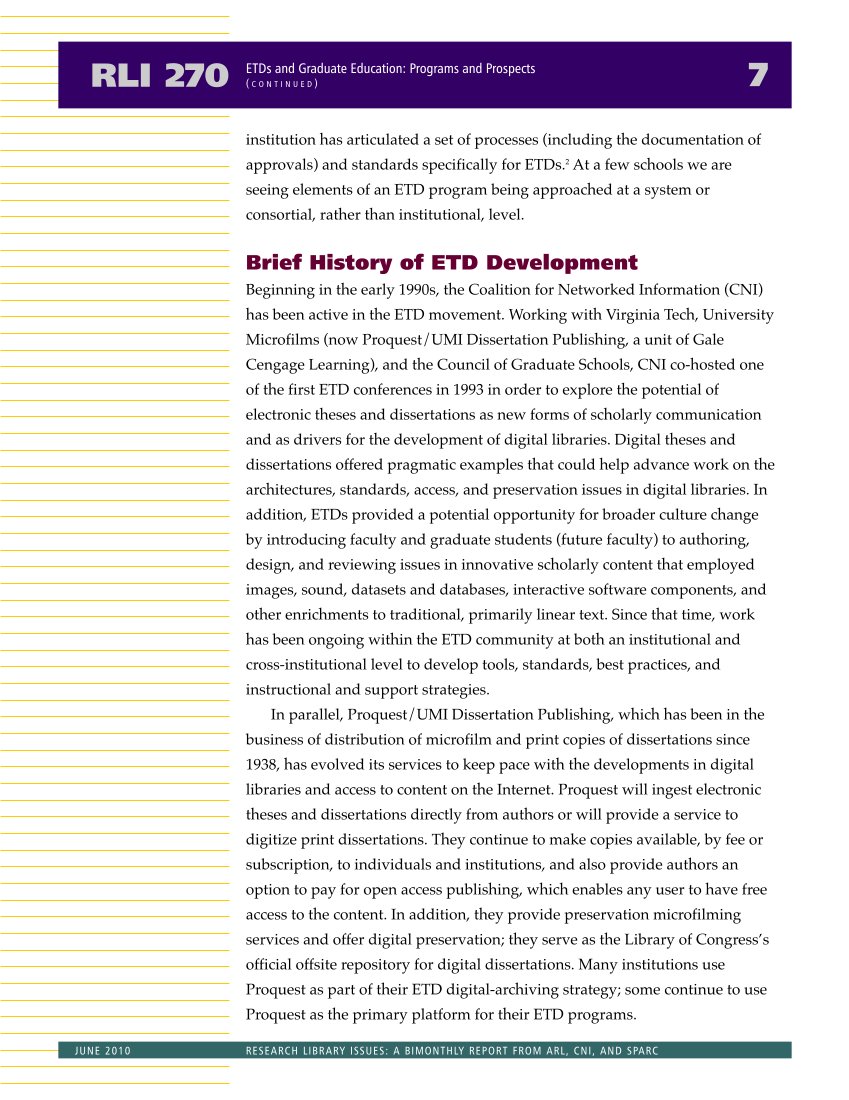institution has articulated a set of processes (including the documentation of approvals) and standards specifically for ETDs.2 At a few schools we are seeing elements of an ETD program being approached at a system or consortial, rather than institutional, level. Brief History of ETD Development Beginning in the early 1990s, the Coalition for Networked Information (CNI) has been active in the ETD movement. Working with Virginia Tech, University Microfilms (now Proquest/UMI Dissertation Publishing, a unit of Gale Cengage Learning), and the Council of Graduate Schools, CNI co-hosted one of the first ETD conferences in 1993 in order to explore the potential of electronic theses and dissertations as new forms of scholarly communication and as drivers for the development of digital libraries. Digital theses and dissertations offered pragmatic examples that could help advance work on the architectures, standards, access, and preservation issues in digital libraries. In addition, ETDs provided a potential opportunity for broader culture change by introducing faculty and graduate students (future faculty) to authoring, design, and reviewing issues in innovative scholarly content that employed images, sound, datasets and databases, interactive software components, and other enrichments to traditional, primarily linear text. Since that time, work has been ongoing within the ETD community at both an institutional and cross-institutional level to develop tools, standards, best practices, and instructional and support strategies. In parallel, Proquest/UMI Dissertation Publishing, which has been in the business of distribution of microfilm and print copies of dissertations since 1938, has evolved its services to keep pace with the developments in digital libraries and access to content on the Internet. Proquest will ingest electronic theses and dissertations directly from authors or will provide a service to digitize print dissertations. They continue to make copies available, by fee or subscription, to individuals and institutions, and also provide authors an option to pay for open access publishing, which enables any user to have free access to the content. In addition, they provide preservation microfilming services and offer digital preservation they serve as the Library of Congress’s official offsite repository for digital dissertations. Many institutions use Proquest as part of their ETD digital-archiving strategy some continue to use Proquest as the primary platform for their ETD programs. RLI 270 7 ETDs and Graduate Education: Programs and Prospects ( C O N T I N U E D ) JUNE 2010 RESEARCH LIBRARY ISSUES: A BIMONTHLY REPORT FROM ARL, CNI, AND SPARC



































